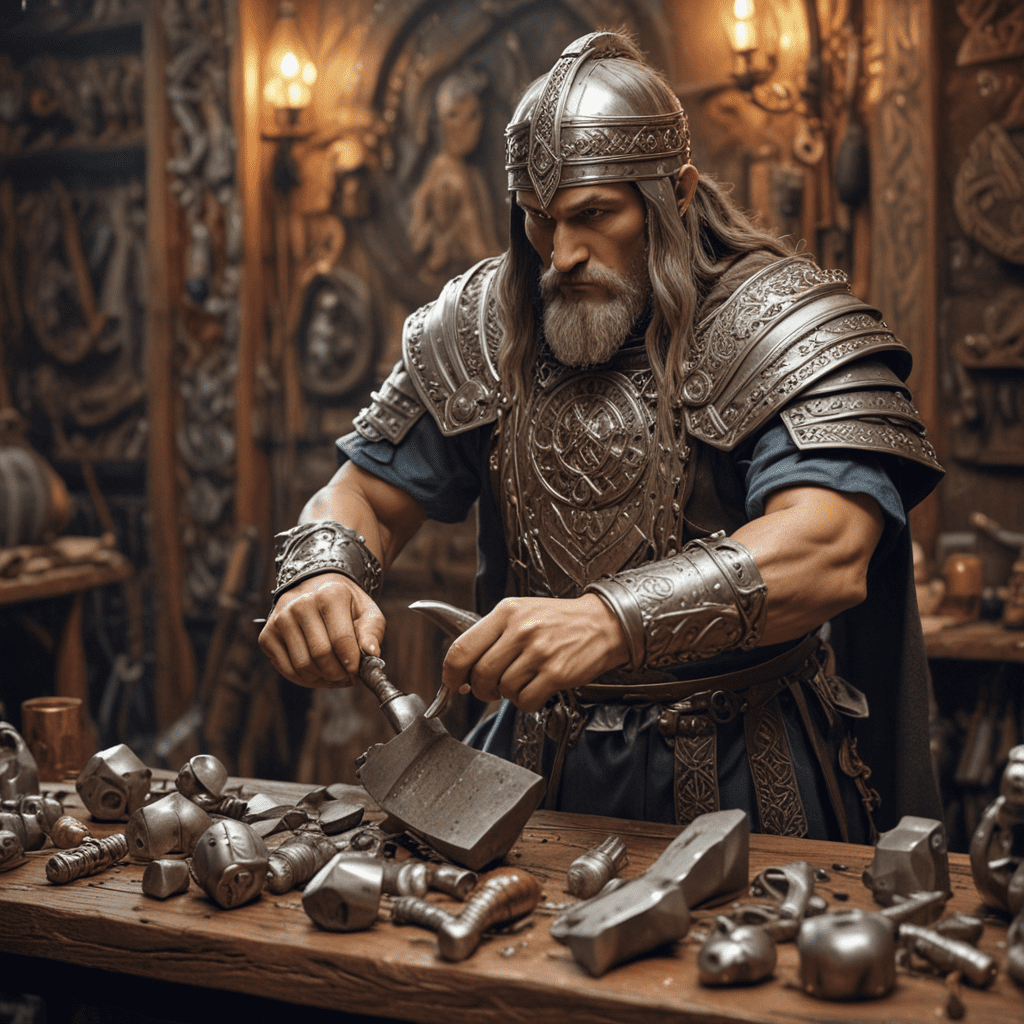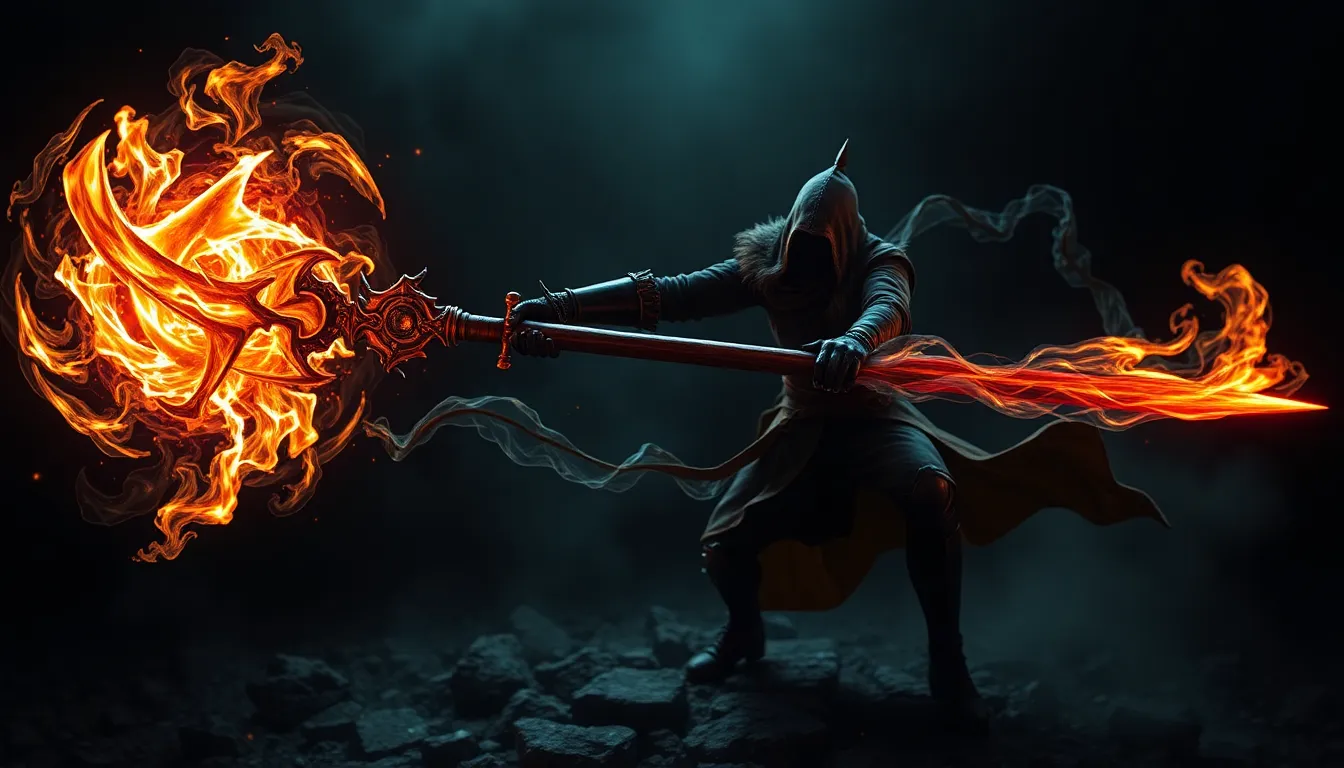The Importance of Metalworking in Slavic Culture
Metalworking held immense significance in Slavic culture, shaping both their practical and spiritual lives. The ability to transform raw materials into essential tools, weapons, and ornaments not only advanced their technological development but also played a crucial role in their mythology and beliefs. Metals, especially iron, were imbued with sacred properties and associated with divine powers, making metalworking an art intertwined with the supernatural.
The Role of Smiths in Slavic Mythology
Smiths occupied a revered position in Slavic society, seen as intermediaries between the human and divine realms. They possessed not only technical skills but also spiritual knowledge, wielding the power to forge both physical and magical objects. Slavic mythology is replete with tales of legendary smiths, such as Svarožič, the god of fire and metalworking, and Kovač, the blacksmith who crafted the first tools and weapons for the gods.
The Forge as a Sacred Space
The forge held a special place in Slavic mythology, considered a sacred space where the transformative power of fire and metal combined. It was believed that the forge was a portal to the otherworld, allowing the smith to access supernatural forces and forge objects with extraordinary properties. The act of smithing itself was seen as a ritual, with specific incantations and offerings made to the gods to ensure the success of the work.
The Symbolism of Metal in Slavic Beliefs
Metals, particularly iron, were imbued with potent symbolism in Slavic beliefs. Iron was associated with strength, protection, and warding off evil spirits. It was believed that iron could absorb negative energy and prevent harm, making it a common material for weapons, armor, and amulets. Other metals, such as gold and silver, were associated with wealth, status, and divine favor.
The Creation of Weapons and Tools
One of the primary roles of Slavic smiths was the creation of weapons and tools essential for warfare, hunting, and everyday life. Swords, axes, spears, and arrowheads were meticulously forged using a combination of skill and ritualistic practices. The quality of these weapons was crucial in battle and could determine the outcome of conflicts. Smiths also crafted agricultural tools, such as plows, scythes, and sickles, enabling the Slavs to cultivate their land and sustain their communities.
6. The Crafting of Jewelry and Accessories
In addition to weapons and tools, Slavic smiths also excelled in the creation of jewelry and accessories. They crafted intricate necklaces, bracelets, rings, and earrings using a variety of metals, including gold, silver, and bronze. These pieces often featured intricate designs, incorporating elements of nature, mythology, and personal symbolism. Some jewelry also served a protective or talismanic purpose, believed to ward off evil spirits or bring good fortune.
7. The Rituals and Beliefs Associated with Smithing
The act of smithing was steeped in ritual and belief for the Slavs. Before beginning their work, smiths would often make offerings to the gods, asking for their guidance and protection. They also observed specific rituals during the forging process, such as using sacred tools and incanting protective formulas. It was believed that smiths possessed the ability to influence the properties of metal through their rituals and incantations, imbuing their creations with special powers.
8. The Legends and Myths Surrounding Smiths
Smiths featured prominently in Slavic folklore and mythology. Legends and tales told of legendary smiths who possessed extraordinary abilities, creating magical weapons and objects that played a pivotal role in shaping the destiny of the Slavic people. Some smiths were said to have the power to control fire, transform metal with their gaze, or even create life itself. These myths reflected the reverence and awe in which smiths were held by Slavic society.
9. The Influence of Metalworking on Slavic Art
The art of metalworking left an indelible mark on Slavic culture, influencing various forms of artistic expression. Metalworking techniques and motifs found their way into embroidery, wood carving, and pottery. Jewelry designs, in particular, showcased the intricate craftsmanship of Slavic smiths, incorporating elements of nature, mythology, and traditional symbols. The influence of metalworking can still be seen in contemporary Slavic art and design, preserving the legacy of these skilled artisans.
10. The Legacy of Slavic Metalworking in Modern Culture
The legacy of Slavic metalworking continues to resonate in modern culture. Traditional techniques and designs are still employed by contemporary artisans, preserving the skills and artistry of their ancestors. Slavic metalworking has also influenced modern jewelry design, fashion, and even architecture. The enduring appeal of Slavic metalworking lies in its combination of functionality, beauty, and spiritual significance, ensuring its continued relevance in contemporary society.
FAQ:
Q: Who was the god of metalworking in Slavic mythology?
A: Svarožič
Q: What was the significance of iron in Slavic beliefs?
A: It was associated with strength, protection, and warding off evil spirits.
Q: Did Slavic smiths only create weapons and tools?
A: No, they also crafted jewelry and accessories.
Q: What rituals were involved in Slavic smithing?
A: Offerings to the gods, sacred tools, and protective incantations.
Q: How did metalworking influence Slavic art?
A: Techniques and motifs were incorporated into embroidery, wood carving, and pottery, particularly in jewelry designs.



